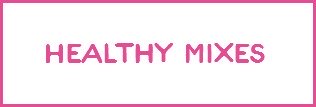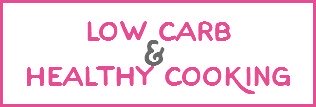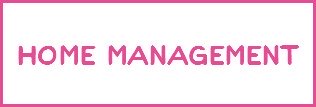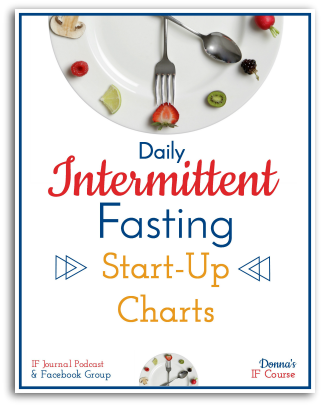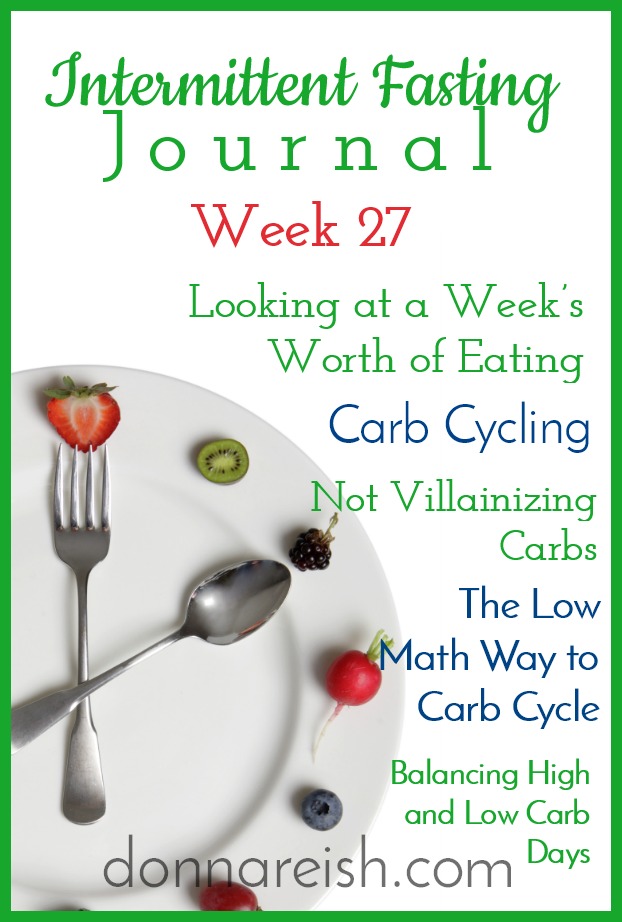
In this broadcast, Donna Reish, blogger, curriculum author of 100+ language arts/writing books, and Intermittent Fasting teacher, teaches listeners about Carbohydrate Cycling—and how it might be used with Intermittent Fasting. She begins by reminding listeners that if IF alone is working well, you are not plateaued desperately, or you are not working on the last stubborn 20 pounds, you probably want to keep doing what you are doing. However, we can all benefit from learning about what our bodies need, macro-nutrients, and healthier eating, so listen on! Donna gives an overview of Carb Cycling in general—how it isn’t necessarily a “low carb” or “keto” diet but rather is a focus on switching up fuel sources day by day and correlates with low intensity and strength training exercise days. Finally, in the first half of this two-part broadcast, Donna rants and raves about this approach—how it is healthy to focus on macronutrients, why it helps us incorporate real foods more fully, how we don’t need to villainize entire food groups, why it’s better to up carbs than it is to have cheat days, and the positive effect Carb Cycling can have mentally and emotionally compared to other “diets.” Finally, she recommends that listeners ask themselves how different this approach might be to other restrictions and how they might already do some of these things intuitively. Donna leaves listeners with the option of receiving a free sample of the Plexus pink drink, today’s broadcast sponsor. (Join Donna in Broadcast #28 when she explains three ways to Carb Cycle and teaches IF’ers how they can use a low math method to look at their entire week and make better food choices.)
Note: Italics portions of outline are next week’s notes (Episode #28).
A. Should You Carb Cycle?
1. Proponents say boosts metabolism and helps with more fat burning
2. Said to be easier to follow than low carb
3. Said to be better for muscle building/strength training since the high carb days help fill your glycogen stores in your muscles for working out
4. Thought to be a more “advanced” weight management tool for those who are trying to lose last 30 pounds or who have plateaued for a while with other methods
5. Pairs easily with IF since it isn’t unusually low calorie
6. Not needed with IF unless want to break through a plateau, learn more about healthy eating, or develop another eating boundary

B. Overview
1. Method by which you manipulate your carbohydrates to have more carbs some days and fewer carbs other days
2. Used by people who want to burn fat quickly
3. Can be elaborate (counting all macros and calories) or simple (examining the day in terms of carby foods only)
4. Paired with exercise plans
a. Cardio with low carb days
b. Large muscle weight training/HIIT with high carb days
5. Looking at carbs differently than most low carb diets—not trying to get to “keto” or anything (you’re letting fasting do that for you)…..but rather changing up of fuel sources (carbs are not BAD in carb cycling….they are one of three fuel sources)
6. Don’t weigh following a high carb day since every gram of carb can store three to four grams of water! Not true weight loss or weight gain
7. Allow two to four weeks to adjust to a change
C. Understanding Low Carb Diets
1. Keto—75% fat; 15% protein; 10% carbs
a. Why you can’t “kind of keto”
b. Three ways to “go keto”
i. Keto diet
ii. Fast-induced ketosis
iii. Exercise-induced ketosis
2. Low Carb—50 to 100 carbs per day
3. Carb cycling—Use macro counter to find your needed carbs—that is a moderate day; go down or up from that for high and low days

D. Rants and Raves About Carb Cycling
1. Practitioners state it’s healthy because the focus is on all the macros
2. Thought to be healthy because it focuses on healthy carbs and real foods
3. How different is it from other “separate fats and carbs” approaches?
4. How different is it than calorie counting or calorie cycling (basic premise begins with your TDEE—Total Daily Energy Expenditure)
5. Some say better than cheat days because it works the carbs/calories into your TDEE—not adding extra calories or carbs to your week
6. Good since it looks at entire week, not just one day
7. Can be paired with activity level (which any intuitive approach can)
8. Thought to be mentally and emotionally favorable because you know high carb day is coming
9. Do we do this automatically with IF?
E. Simplest Approach—low carb and high carb
1. Have low carb and high carb days
2. Get your TDEE (Total Daily Energy Expenditure) for your goal weight (or get TDEE based on current weight and losing one pound per week average) (example 1800 calories to lose fat)
3. Eat low carb (30 to 80 carbs) one to three days
a. Can eat more fat here if desired
b. Pair this with cardio or light exercise
c. Alternate with High Carb days if desired (or two low carb then one high) for the next day (since fasting)
4. Eat high carb (or TDEE carb level) other days (100 to 300 carbs)
a. Will need less fat here (more fruits, veggies, complex carbs)
b. Pair this with strength/large muscle training and/or HIIT for the next day (since fasting)
5. Keep protein the same all the time (based on TDEE–.9 to 1 gram per pound of body weight)
6. Option: Have one no count day or make it whichever you want if fat loss is slower than you’d like
7. Eat real foods
8. If this doesn’t help, then you will need a more “mathematical” approach

F. More Difficult Approach
1. Figure TDEE like Simple Approach (example 1800 calories)
2. Get more specific with Protein, Fat, and Carbs
3. Examples:
a. Low Carb Day/Higher Fat—still at 1800 calories per day per TDEE to lose fat
i. Protein 180 grams (40% of calories/720 calories)
ii. Fat 80 grams (40% of calories/716 calories)
iii. Carbs 90 grams (20% of calories/360 calories)
b. High Carb Day
i. Protein 180 grams (40% of calories/720 calories)
ii. Fats 35 grams (20% of calories/360 calories)
iii. Carbs 160 grams (40% of calories/720 calories)
4. Still work in exercise in the same way
5. Have specific plan for each day of the week
a. Quicker loss: Low, Low, High, Low, Low, High, No carb or No count day
b. Regular loss: low, high, low, high, low, high, no carb or no count day
6. Very tedious
G. Most Difficult Approach—High, Medium, Low
1. Alternating days with only one high day (“cheat” day)
a. Low—under 50 carbs
b. Medium—75-100 carbs
c. High—500 carbs or cheat day
2. Technically is just a low carb diet
3. Can lose simply by being in ketosis most of the time
4. Might not be low enough in calories if not compensating with other macros
5. Not sure of the benefit since it is really a low carb diet with a cheat meal or day each week
6. Can be combined with “medium complicated” for exact counting of macros
H. Closing
Plexus Plant-Based Supplements
1. Visit our store HERE
2. Hunger Control Slim (pink drink) HERE
3. Try a free sample of Plexus Slim Hunger Control (pink drink) HERE
4. Today’s Feature: Ease Capsules
a. At our store HERE
b. Ingredients:
i. Green lipped mussel—indigenous elderly people consuming this have little to no arthritis (even those with demanding activities)
ii. Bromelain—anti-inflammatory; great for asthma, allergies, arthritis, and most surgery
iii. Tumeric—anti inflammatory; great for depression, alzheimers, etc.
iv. Serapeptaise—an enzyme that breaks down non living tissue in the body; great for mucous in ears, throat, and nose; also great for muscles and joints
v. Great for pain relief—I use it instead of OTC meds for pain!
vi. Also great for fibro, headaches, and joint pain
c. Research from UK in 2008 show that as weight goes up, so do inflammation markers; direct correlation with inflammation and weight management difficulties
Below are a couple of links to books I use and love. I am an affiliate for Amazon.com. If you click on the links below I will earn a small commission. Thank you for your support of this blog!
Places to Find Me and Find Out More About Intermittent Fasting!
Sign up for my month-long, step-by-step course (starts the first Monday of each month)
Subscribe to the blog and get free IF start up charts
Join my private FB group where I teach IF!
Resources
1) “Delay, Don’t Deny” book (amazing!)
2) “The Obesity Code” book
3) “Feast Without Fear” book
4) “The Complete Book of Fasting” (Jason Fung)
5) “Appetite Correction” book
6) “9 Facts About Plexus Slim” article
9) “Fasting Inferno” blog post with fun YouTube song and lyrics!



